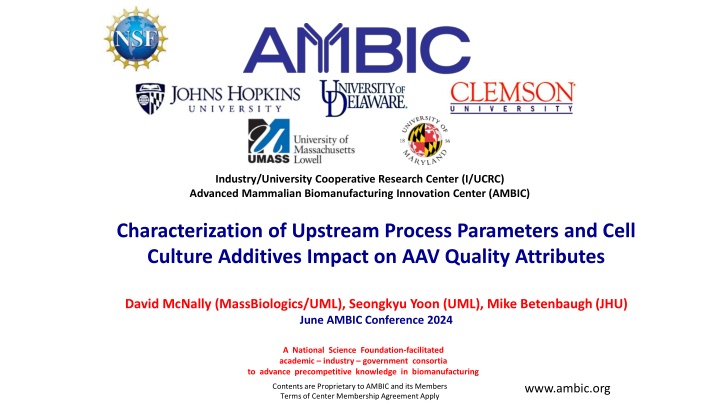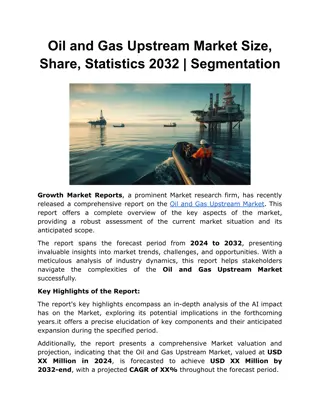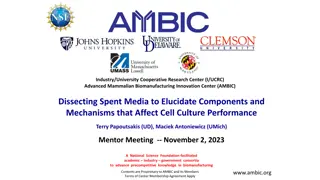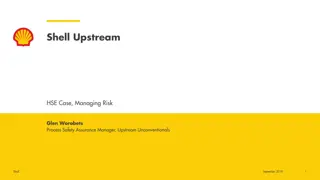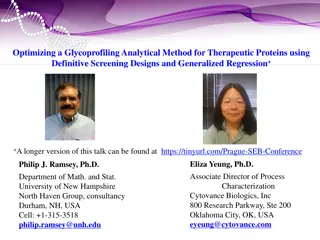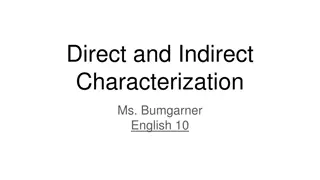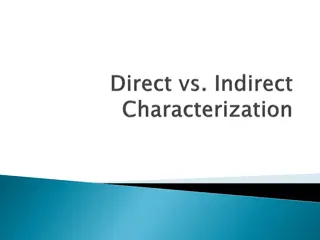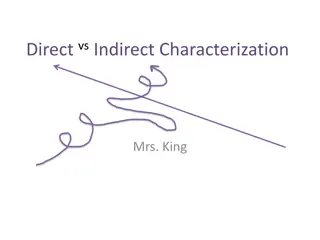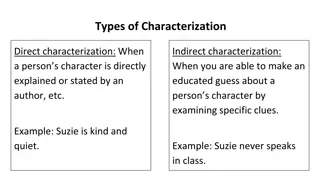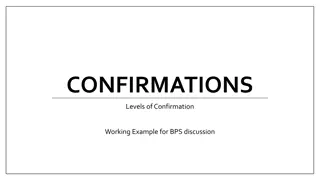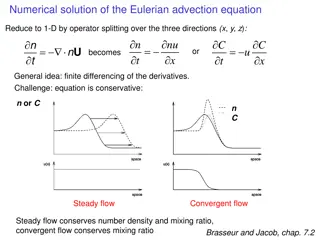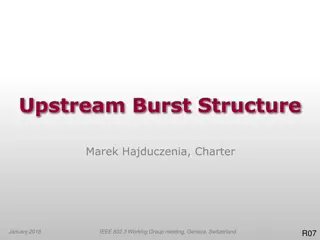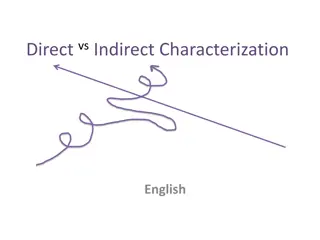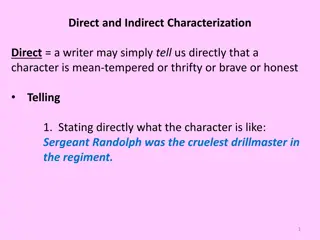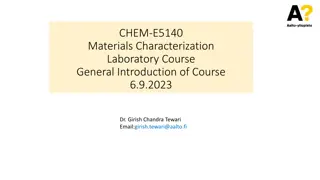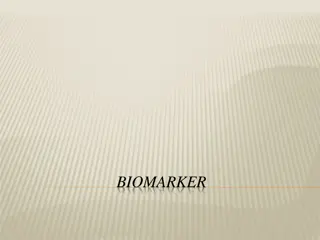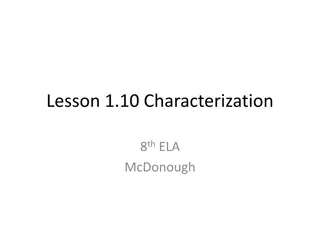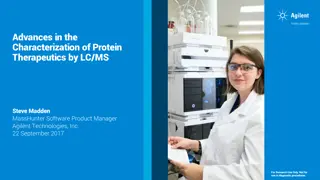Characterization of Upstream Process Parameters in AMBIC
This content pertains to the Advanced Mammalian Biomanufacturing Innovation Center (AMBIC) and its research on the impact of upstream process parameters and cell culture additives on AAV quality attributes. It includes discussions on experimental designs for screening cell cycle inhibitors, determining concentration ranges through literature analysis, and mentor comments on shaking versus non-shaking methodologies and tracking molecule solubility. The aim is to advance precompetitive knowledge in biomanufacturing within an industry-university cooperative research center setting.
Download Presentation

Please find below an Image/Link to download the presentation.
The content on the website is provided AS IS for your information and personal use only. It may not be sold, licensed, or shared on other websites without obtaining consent from the author.If you encounter any issues during the download, it is possible that the publisher has removed the file from their server.
You are allowed to download the files provided on this website for personal or commercial use, subject to the condition that they are used lawfully. All files are the property of their respective owners.
The content on the website is provided AS IS for your information and personal use only. It may not be sold, licensed, or shared on other websites without obtaining consent from the author.
E N D
Presentation Transcript
Industry/University Cooperative Research Center (I/UCRC) Advanced Mammalian Biomanufacturing Innovation Center (AMBIC) Characterization of Upstream Process Parameters and Cell Culture Additives Impact on AAV Quality Attributes David McNally (MassBiologics/UML), Seongkyu Yoon (UML), Mike Betenbaugh (JHU) June AMBIC Conference 2024 A National Science Foundation-facilitated academic industry government consortia to advance precompetitive knowledge in biomanufacturing www.ambic.org Contents are Proprietary to AMBIC and its Members Terms of Center Membership Agreement Apply
UML Update Review of Proposed workflow Review of Previously asked questions Proposed Parameter Ranges Next Steps
Mentors Comment 1 from previous discussion University of Massachusetts Lowell Johns Hopkins University University of Maryland University of Delaware Clemson University Shaking vs. Non-Shaking and Scalability Previously - the experimental flow include 24-well-shallow-plate (700uL working volume sample/well); with No shaking. Now - conducting the experiment in the 24-well-deep plate (3mL working volume sample/well); with shaking.
Experimental Design for Screening Cell Cycle Inhibitors using Flow Cytometer University of Massachusetts Lowell Cell culture grown in 125mL flask until reached a specific density of ~3-4 million viable cells/mL Johns Hopkins University University of Maryland University of Delaware HEK293 Cell Culture Clemson University No Transfection Transfer to 24-deep-well microplates with equal number of cells. Shaking Speed: 300rpm; Total Volume: 3mL Divide Cells Adding CCI after cells reach a specific VCD representative of the transfection process. Addition of Chemical Additive Harvest after CCI addition Time Course: 6 hours, 24 hours, 32 hours Harvesting Cells Staining & Collecting data Plot dose-response curve (concentration vs %cell response) Calculate EC50 value Flow Cytometer & Data Analysis
Mentors Comment 2 from previous discussion University of Massachusetts Lowell Johns Hopkins University University of Maryland University of Delaware Clemson University Track the solubility of the molecules. Address if the solvents can influence cell behavior and toxicity. Finding the Vendor.
Determining Concentration Ranges through Literature Analysis Small Molecules Inhibitors University of Massachusetts Lowell Selleckchem.com Price Concentrations Solubility Johns Hopkins University University of Maryland University of Delaware Clemson University DMSO : 62 mg/mL ( (201.69 mM), Ethanol: 4 mg/mL, Water: Insoluble DMSO : 70 mg/mL ( (200.32 mM), Ethanol: Insoluble, Water: Insoluble DMSO : 17 mg/mL (64.07 mM), Ethanol: 2 mg/mL, Water: Insoluble DMSO : 59 mg/mL (200.44 mM), Ethanol: 59 mg/mL, Water: Insoluble DMSO : 100 mg/mL (194.35 mM), Ethanol: 2 mg/mL, Water: Insoluble DMSO : 3 mg/mL (4.93 mM), Ethanol: Insoluble, Water: Insoluble DMSO : 41 mg/mL (94.81 mM), Ethanol: Insoluble, Water: Insoluble DMSO : 100 mg/mL (109.38 mM), Ethanol: 100 mg/mL, Water: Insoluble DMSO : 71 mg/mL ( (200.31 mM), Ethanol: 71 mg/mL, Water: Insoluble DMSO : 79 mg/mL ( (199.24 mM), Ethanol: 35 mg/mL, Water: Insoluble M344 2.5-5uM 5mg USD147 LBH589 (Panobinostat) 0-10uM 10mM*1mL in DMSO USD197 HDAC Inhibitors Pyroxamide 10mg USD380 1.25-20 mM LMK235 <1uM 10mM*1mL in DMSO USD197 TMP269 10uM 10mM*1mL in DMSO USD349 Torin-1 2 (Mtor1) and 10nM (Mtor2) 10mg USD170 Mtor Inhibitors Torin-2 50nM 10mM*1mL in DMSO USD190 Rapamycin 50nM 10mM*1mL in DMSO USD197 Roscovitine 2-40uM 10mM*1mL in DMSO USD191 Speedy/R ingo C Dinaciclib 0-5uM 10mM*1mL in DMSO USD272
University of Massachusetts Lowell Johns Hopkins University University of Maryland University of Delaware Similar to CHO, DMSO concentrations lower than 0.3% - 0.5% v/v to have no apparent impact on HEK cells. The stock solution in DMSO can be diluted it with water or media just before performing the experiment. Clemson University Some supporting Papers Some supporting Papers https://www.sigmaaldrich.com/US/en/technical-documents/technical-article/cell-culture-and-cell-culture- analysis/cell-culture-for-manufacturing/dmso-freezing-technique-high-cell-density-cryopreservation. https://file.medchemexpress.com/HandlingInstruction/Compound%20Handling%20Instructions.pdf https://file.selleckchem.com/downloads/Inhibitor-Handling-Instructions-en.pdf
Solubility Testing of CCIs Will the CCI precipitate when diluted with water/media? University of Massachusetts Lowell Johns Hopkins University University of Maryland University of Delaware Clemson University Initial testing procedure suggested by Selleckchem (vendor) Test with the 0.5%v/v DMSO (highest conc) for each drug Other Possible Analytical Methods: NMR Spectroscopy (Quantitative) followed by LCMS (Previous AMBIC project) Characterization of Chinese hamster ovary cell culture feed media precipitate https://aiche.onlinelibrary.wiley.com/doi/epdf/10.1002/btpr.3188
University of Massachusetts Lowell Current Objectives Johns Hopkins University University of Maryland University of Delaware Clemson University Obtain CCI reagents Solubility Testing of the CCIs Flow cytometry cell cycle analysis method confirmation
University of Massachusetts Lowell JHI Update Johns Hopkins University University of Maryland University of Delaware Clemson University Ambr Run Troubleshooting Next steps
University of Massachusetts Lowell Completed Ambr run Johns Hopkins University University of Maryland University of Delaware Glucose (g/L) Lactate (g/L) Glucose (g/L) Lactate (g/L) #S pH #S pH Clemson University 1,2 1,2 1.52 0.56 6.83 1.72 1.73 6.76 3,4 3,4 0 0 7 1.16 3.76 7.49 5,6 5,6 3.25 0.30 6.95 0.79 0.38 6.13 7,8 7,8 0.45 3.24 7.04 4.35 2.01 7.02 9,10 9,10 0 0 7 4.01 0.97 6.63 11,12 11,12 2.13 1.56 7.50 2.50 3.09 7.95 Proposed conditions Actual conditions Ambr allows variation of pH between 6.5 to 7.5 Verified GFP expression Controlled pH with CO2 and 5M NaOH Used sodium lactate to control for lactate
University of Massachusetts Lowell AAV transfection protocol Johns Hopkins University University of Maryland University of Delaware Clemson University Input parameter Low/Medium/High or fixed setting 1:1 (Fixed) 2/4/6 0.2:1/2.6:1/5:1 0.2:1/2.6:1/5:1 1.0 (Fixed) 3 (Fixed; 10% culture volume) 7 (Fixed) Simulated value 53.25 1.86 1013 Verification setting PEI:DNA ratio Cell density (x106 cells/mL) [X1] pHelper:pGOI [X2] pHelper:pRepCap [X3] DNA mass (pg/cell) Cocktail volume (mL) Incubation time (min) Output measurement1 Transfection efficiency (%)[Y1] Titer (VG/L) [Y2] 1:1 4.35 1:2 1:2 1.0 3 7 Measured value 58.95 1.48 1.43 1013 3.90 1012 *unpublished protocol AMBIC AAV protocol uses PEIpro, and we used PEI MAX for this run
University of Massachusetts Lowell Troubleshooting AMBR run Johns Hopkins University University of Maryland University of Delaware Clemson University pH not kept within the specified range Vessel volume limit is 15.5 ml NaOH addition stops when total volume reaches 15.5 ml Suction cup malfunction pH constraint: 6.5-7.5 Noticed an increase in pH towards the end. Currently running YSI to measure the glucose lactate
University of Massachusetts Lowell Troubleshooting AMBR run Johns Hopkins University University of Maryland University of Delaware Clemson University Cell seeding density Used a 4 well plate to seed cells from 2 of the wells and saw discrepancy Transfection delay Prepared transfection complex separately Used the liquid handler for transfection. A ~10 min difference between vessel 1 and vessel 12
University of Massachusetts Lowell VCD and Viability Johns Hopkins University University of Maryland University of Delaware Clemson University 7 100% 90% 6 80% 5 70% 4 60% VCD (x106) Viability 50% 3 40% 2 30% 1 20% 10% 0 Day 0 Day 1 Day 2 Day 3 0% 1 2 3 4 5 6 Day 0 Day 1 Day 2 Day 3 7 8 9 10 11 12 1 2 3 4 5 6 7 8 9 10 11 12
University of Massachusetts Lowell JHU Next steps Johns Hopkins University University of Maryland University of Delaware Clemson University For future ambr set up Starting with lower volume? Higher concentration of NaOH? Replace suction cups Use PEIpro as transfection reagent Manually adding transfection complex Single well cell seeding
